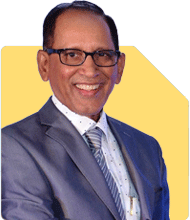
hello sir my age is 45 now, I am married I have to kids one is 8 year and one is 13 year, last 5 years I am doing forex trading and as you know its also skills so its take long time to know and learn by mistake and pay fees to market, so I am now set with my mindd which mistake I don't have to do.for consitancy, but now I have no fund to trade and compound my money for 6 month to consist build my capital which I make for 2-3 percent per day for over all my monthly expenceee and long term I have to make good capital by compounding. I also take financially help with my family to run my monthly expenses for last 5 years so they also not money for help me lumsum .and I don't have any job and actually I am not interested to any job..because trading is my passion and now I don't like any thing.so now I am bad situation monthly bills school fees ,house rent medical bills and debt is just give frustration and tension and family admosphier not well in relation due to money problum ,,so please guide me my age is 45 and nothing work is passionate for me except trading, so please guide me. and as age factor I may not feel good with job. because earlier I also did self business of jewellery and take big losses,,I also did job after as sales manager but I will not regular long time holddd in any job I also did lots of jobss but not more than 1 year 6 month 3 month 1 month only..I dont like to report any one all time.who give me order what I do or not,,so plsss help me what should I do ,but one thing I also know by trading I got financial freedom..and achived my gole but now situation its take more anddd more time due to not baackup
Ans: Your honesty, clarity of thought, and deep self-awareness are admirable.
Even after setbacks, you have stayed committed. That is not easy.
Your belief in trading and your self-education deserve respect.
Now let’s take a detailed 360° look at your situation and build a practical path forward.
» Understanding Your Present Financial Reality
– You are 45, married, with two children aged 8 and 13.
– For the last 5 years, you have depended on family for expenses.
– You have no job now, and no savings or trading capital.
– Your monthly expenses are continuing, and debts are piling.
– There’s financial stress, and family atmosphere is affected.
– You have passion and skills in forex trading.
– You’re clear that a job is not suitable for your mindset.
This self-assessment is a very strong starting point.
Being brutally honest with oneself is the first step towards meaningful action.
» Identifying the Real Challenge
– You’ve worked hard for 5 years to master forex trading.
– Now you’re skilled but have no capital to trade consistently.
– Compounding requires uninterrupted trading for 6–12 months.
– But life expenses, debts, and emotional stress are roadblocks.
– There is no backup or external support at the moment.
This is a classic gap between skill and resource.
You’re ready mentally, but not financially.
» Why This Situation Needs a Bridge Plan
– Trading can give financial freedom, but not instantly.
– To survive till then, you need a steady, low-stress income.
– Without that bridge, trading pressure will only increase.
– Capital will be used for survival, not compounding.
– Also, stress and family tension will affect trading focus.
So, before jumping fully into trading again, you need a survival bridge.
A stable 12–24 month financial support system is essential.
» Short-Term Actions You Must Consider Now
1. Stop trading with borrowed or survival money
– Never trade with money meant for school fees or rent.
– It adds stress, clouds judgment, and leads to mistakes.
– Trading needs peace of mind, not desperation.
2. Create a 12-month Survival Plan
– You need monthly cash flow for your basics.
– Find an income model that gives at least Rs. 25K–30K/month.
– This will not make you rich, but will reduce stress.
– Look for temporary cash-generating work you can tolerate.
– It can be short-term, part-time, or gig-based.
3. Evaluate Gig Income Opportunities
– Content writing, social media handling, freelance sales.
– Online tutoring, virtual assistant, basic trading courses.
– Small-time freelancing on Fiverr or Upwork.
– Daily wage delivery jobs, night shifts, home-based packing.
– Work that gives you Rs. 1K/day = Rs. 25K/month.
You may not like these. But they are temporary tools, not life decisions.
You are not choosing this for life.
You are choosing this to fuel your real dream.
» Why Job Is Not the Only Way to Earn
– You said you don’t like being ordered around.
– That's fine. Not everyone fits into corporate culture.
– But income is still necessary. You must separate job from work.
Work you control = freelance, self-paced, or performance-based.
You can design your own model. You only need to earn Rs. 1000/day.
That small amount can protect your passion and peace.
» Creating a Safe Capital for Trading
– Your trading method needs capital plus stability.
– You said you can generate 2–3% per day.
– Even if we assume 1% per day, you need a safe fund.
So, build a Rs. 50K–Rs. 1 lakh trading capital without touching it.
Treat it like a baby.
Build it slowly over 6–12 months, parallel to your survival income.
Don’t use this money for rent, school, or debt.
Keep it parked until you're ready to trade with zero pressure.
» Structuring Your Time for Both Survival and Growth
– Allocate fixed hours daily to income generation.
– Allocate separate hours to trading backtesting or demo accounts.
– Keep weekends or nights for reading or strategy refinement.
– Track both performance and energy.
– Document your wins and misses in trading journals.
Routine gives you momentum. Chaos gives you fatigue.
Small structure helps in building big success.
» Your Children and Family Responsibility
– Your kids are in critical academic years.
– Your emotional availability is as important as money.
– Make them feel safe, heard, and loved.
– Don’t pass on the financial stress as emotional distance.
Even small progress will motivate your family.
Involve them as cheerleaders, not critics.
» Managing Debts Without Panic
– List all debts: amounts, lenders, monthly EMIs.
– See which ones can be paused, negotiated, or converted.
– If informal, speak to lenders openly and set expectations.
– Pay Rs. 500 monthly, but communicate proactively.
Silence increases friction. Communication builds trust.
People usually understand if they see effort and intent.
» What You Must Not Do Now
– Don’t borrow money for trading.
– Don’t take new loans.
– Don’t chase “quick money” in crypto, options, or tips.
– Don’t try to double money in 1 month.
– Don’t cut off your family emotionally.
These mistakes will delay your freedom.
Focus on calm execution, not forced outcome.
» Emotional Support and Mental Wellbeing
– Your current stress is very real.
– Frustration, helplessness, and guilt are natural feelings.
– But please don’t isolate yourself mentally.
– Stay in touch with supportive friends or mentors.
Start a simple morning routine – walking, prayer, journaling.
Calm mind helps in right trading decisions.
» Revisit and Refine Your Trading System
– Backtest your strategy with historical data.
– Track your win rate and drawdowns.
– Define when to enter, when to exit, when to stop.
– Reduce emotional trading.
– Create written rules and follow them like rituals.
A repeatable, emotion-free system is key for consistent results.
» Build Reputation If You Plan to Teach or Manage Money Later
– Record your monthly profits and trading logs.
– Show consistent results over 6–12 months.
– Create a simple YouTube channel or blog.
– Share your learning journey or trading concepts.
– Build digital identity slowly.
If people trust your skills, capital will come to you.
But that trust needs proof and patience.
» Investment Advice for the Future
– Once you generate surplus, start investing gradually.
– Use mutual funds via Certified Financial Planners.
– Never invest in direct mutual funds on your own.
– Direct plans have no guidance, no discipline, and no review.
Regular plans via Certified Financial Planner give:
– Proper asset allocation
– Timely portfolio reviews
– Handholding during market panic
– Long-term wealth creation
You need that support. You already took many risks.
Now take guided steps for stability.
» Avoid Index Funds Completely
– Index funds give average market returns.
– They can’t handle market crashes or recover smartly.
– No downside protection. No expert decision-making.
Actively managed mutual funds are better for your goal.
They adapt. They are researched. They beat inflation long-term.
You need capital growth, not market mimicry.
» Finally
– Your passion for trading is your strength.
– But your peace and patience will be your superpower.
– You are not too late. You are actually very close.
– You only need survival income and emotional stability.
With that in place, your capital will come.
Then your compounding journey can begin—without pressure.
Respect yourself for not giving up.
You are still standing. That matters most.
You are not alone in this. You just need small wins daily.
Best Regards,
K. Ramalingam, MBA, CFP,
Chief Financial Planner,
www.holisticinvestment.in
https://www.youtube.com/@HolisticInvestment


























